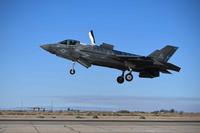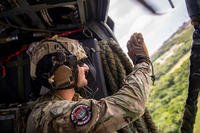The military has made progress over the past year in reducing the number of sexual assaults in the ranks -- the first time there's been a reduction in nearly 10 years.
The news comes from the release of the Defense Department's annual report on sexual assault in the military, which found that approximately 29,000 active-duty members were sexually assaulted in the past year -- about 15,000 women and almost 14,000 men -- out of a force of nearly 1.3 million service members.
"The department estimates that nearly 7,000 fewer service members experienced sexual assault in 2023 than in 2021, the last year the department measured this," Beth Foster, the executive director of the Office of Force Resiliency, told reporters Thursday.
Read Next: Staff Sgt. Gordon Black Reportedly Pleads Guilty to Theft While Being Held by Russia
Foster stressed that the Defense Department's leaders "made this a top priority issue ... and that work is starting to bend the curve." The department said it would spend $1 billion on sexual assault prevention in fiscal 2024.
However, both Foster and Defense Secretary Lloyd Austin cautioned that the department's work is far from over.
In a statement released after the results, Austin said that he found the data "encouraging" but noted that "we have far more work to do."
Austin said that he "made clear" that the department "must double down on our efforts to end sexual assault and sexual harassment" to the deputy defense secretary, the chairman of the Joint Chiefs of Staff, the service secretaries and the service chiefs.
The officials who briefed reporters on the report's results pointed to command climate as a significant factor in the prevalence of sexual assaults.
They said they are looking to capitalize on the reduction by growing an independent "prevention workforce" that will help commanders analyze data to better understand the climate among the troops they lead and also help in "identifying, assessing and ultimately driving down those risk factors," according to Foster.
Foster said that the department has hired about 40% of this workforce to date -- more than 1,000 personnel -- but added that they are still working toward a 2,500-personnel goal that they want to hit by the fall of 2028.
Despite the gains that have been made over the past several years, there are still areas where military leaders are struggling for progress.
Data presented by Foster and her team showed that, though service members would overwhelmingly turn to their unit commanders or senior enlisted advisers when faced with a case of sexual harassment or assault, those experiences rarely left them satisfied.
While nearly 90% of service members surveyed went to an immediate supervisor for help, only about 40% reported being satisfied with the help they received. The numbers for military law enforcement were even lower, with only about one-third of service members finding them to be helpful.
Only about 43% of female service members said that they trusted the military system to ensure their safety or treat them with dignity or respect after an incident.
Officials also had few answers to offer on last year's revelation that the service academies -- universities that are charged with producing many of the military's junior officers -- had reported the highest number of sexual assaults since the Defense Department began closely tracking the problem in 2006.
Foster said that her team saw that the "number of reports did decrease at the academies in this academic program year, but we don't know if this represents a decrease in prevalence until we see next year's report."
Related: Service Academies Report Highest Number of Sexual Assaults Ever














